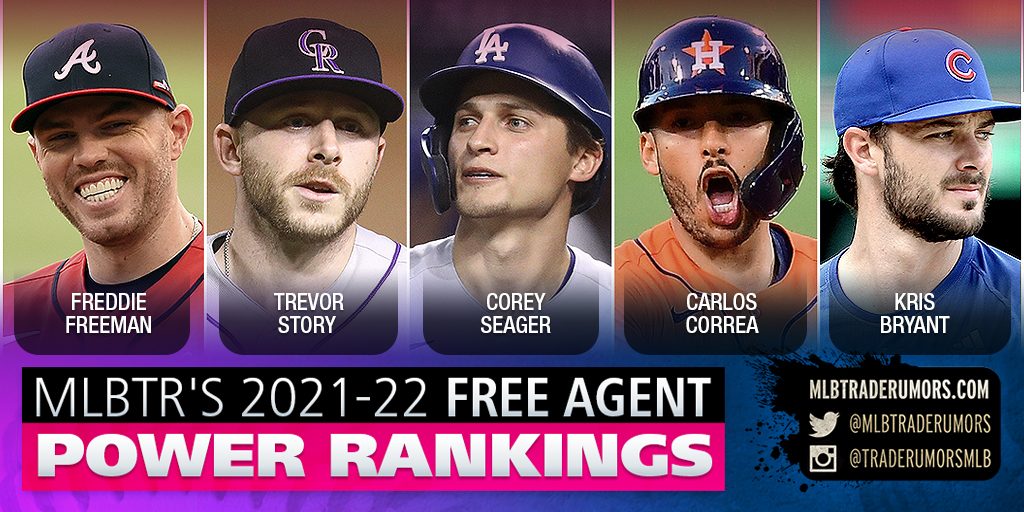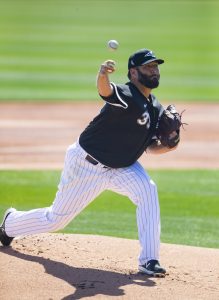An abnormal number of picks from the 2020 Rule 5 Draft survived Spring Training and made the Opening Day rosters with their new clubs. The Orioles and Marlins both broke camp with a pair of Rule 5 picks on the active roster, while the Pirates opened the season with one Rule 5 pick on the roster and one on the injured list. Most clubs that are carrying a Rule 5 pick, unsurprisingly, have little in the way of postseason aspirations. There are a few October hopefuls among those still clinging to Rule 5 picks, however, and it’ll take some uncharacteristically strong Rule 5 showings for those players to survive the season.
We’ll take a look at how the surviving Rule 5 draftees are faring periodically throughout the year. Here’s the first glance…
Currently in the Majors
- Brett de Geus, RHP, Rangers (via Dodgers): Injuries throughout the Rangers’ bullpen might have helped the 23-year-old de Geus crack the Opening Day roster in Texas. He’s out to a shaky start, having walked three batters and hit another three against just two strikeouts through his first 5 2/3 innings. On the plus side, 13 of the 15 balls put into play against him have been grounders.
- Akil Baddoo, OF, Tigers (via Twins): Baddoo is one of the best stories (maybe the best) of the young 2021 season. The 22-year-old homered on his first swing in the big leagues as his family rejoiced in the stands, and in less than two weeks’ time he’s added a grand slam, a walk-off single (against his former organization) a 450-foot dinger off Zack Greinke and a fourth homer. Baddoo has a ludicrous 1.342 OPS through his first 29 plate appearances in the Majors, and while he obviously won’t sustain that, he’s forcing a legitimate audition in the Detroit outfield. Baddoo missed nearly all of 2019 due to Tommy John surgery and didn’t play in 2020. Despite that layoff and the fact that he’d never played above A-ball, the Tigers called his name in December. It may have seemed like a stretch at the time, but it doesn’t look that way now.
- Garrett Whitlock, RHP, Red Sox (via Yankees): The Sox would surely love for Whitlock to stick, having plucked him from their archrivals in New York. So far, so good. Better than good, in fact. Through 6 1/3 scoreless innings, Whitlock has yielded three hits and punched out nine batters without issuing a walk. He’s sitting 95.6 mph with his heater and has posted a hefty 16.9 percent swinging-strike rate. Whitlock also had Tommy John surgery in 2019, so even though he’s previously been a starter, it makes sense to monitor his workload ease him into the mix as the Sox hope to get through the year with him in the ’pen.
- Tyler Wells, RHP, Orioles (via Twins): Wells has allowed a pair of homers and surrendered three total runs on four hits and two walks with five strikeouts in 5 2/3 frames. The O’s aren’t trying to win in 2021, but their bullpen also has four arms that can’t be optioned (Cesar Valdez, Shawn Armstrong, Adam Plutko, Wade LeBlanc). Keeping both Wells and Mac Sceroler (currently on the IL) brings them to six and will hamper their flexibility.
- Zach Pop and Paul Campbell, RHPs, Marlins (via Orioles and Rays): Pop was technically the D-backs’ pick in the Rule 5, but Arizona immediately flipped him to the Marlins for a PTBNL. The 24-year-old didn’t allow an earned run in five spring frames but as I was finishing this post, he served up a three-run homer, bringing his season line to seven runs on three hits, three walks and two hit batters in 3 1/3 innings. Campbell has struggled to a similar extent. He’s surrendered five runs (three earned) and given up four hits and three walks in just 2 2/3 innings. With the Marlins out of tank mode, it’ll be tough to carry both all year.
- Jordan Sheffield, RHP, Rockies (via Dodgers): Sheffield was the No. 36 overall pick in the 2016 Draft, but control issues prevented him from being protected on the Dodgers’ 40-man roster. FanGraphs’ Eric Longenhagen gives Sheffield three plus pitches in his scouting report (fastball, curveball, changeup) but also pegs his command at a 30 on the 20-80 scale. Sheffield has walked or plunked 15 percent of the hitters he faced in the minors. He’s yet to walk anyone 13 batters he’s faced with the Rockies, but he did hit one and has also tossed a pair of wild pitches. That said, he’s also sitting 95.5 mph with his heater and is unscored upon in 3 2/3 frames.
- Luis Oviedo, RHP, Pirates (via Indians): Oviedo was the Mets’ pick at No. 10, but they had a deal worked out to flip him to the Pirates in exchange for cash. Oviedo has been hammered for six runs on six hits (two homers) and two walks with five strikeouts through 4 2/3 innings so far. Even pitching for a tanking club, Oviedo will need to show some improvement in order to stick on the roster all season.
- Will Vest, RHP, Mariners (via Tigers): The Mariners kept last year’s Rule 5 pick Yohan Ramirez for the whole season, but it’ll be tougher to do with a full schedule in 2021. The Mariners’ young core is also beginning to rise to the big leagues, and Vest will need to fend off some intriguing young arms. He’s done a decent job so far, allowing a pair of runs (one unearned) on five hits and four walks with five strikeouts in 7 1/3 innings.
- Trevor Stephan, RHP, Indians (via Yankees): Stephan whiffed 16 of 44 hitters this spring to earn a spot on the Indians’ Opening Day roster, but he’s allowed four runs in his first four MLB frames. The 25-year-old has surrendered five hits (including a homer), walked a pair and hit a batter so far while facing a total of 21 hitters.
- Ka’ai Tom, OF, Athletics (via Indians): Tom, 26, raked at a .310/.412/.552 pace with a homer, two doubles and a triple in 34 spring plate appearances. After that strong audition, however, he’s just 1-for-16 with six strikeouts through his first 16 trips to the plate with the A’s.
On the Major League injured list
- Jose Soriano, RHP, Pirates (via Angels): It wasn’t a surprise to see Soriano open the year on the injured list. He’s still recovering from Tommy John surgery performed in Feb. 2020 and didn’t pitch in a game with the Pirates this spring. He’ll be sidelined for at least the first two months, as the Bucs put him on the 60-day IL to open a 40-man roster spot when they signed Tyler Anderson. Soriano hasn’t pitched above A-ball, but the Pirates aren’t exactly a win-now club, so they can afford to stash him as a seldom-used bullpen piece in order to secure his rights beyond the 2021 season.
- Mac Sceroler, RHP, Orioles (via Reds): Sceroler fanned six hitters in 3 2/3 innings early in the season but also yielded three runs on five hits (two homers), three walks and a hit batter. The Orioles recently placed him on the 10-day injured list due to tendinitis in his right shoulder, although it’s not expected to be too lengthy an absence.
- Dedniel Nunez, RHP, Giants (via Mets): Nunez was hit hard in the Cactus League, surrendering four runs in 3 1/3 innings. He’ll now miss the entire 2021 season after sustaining a UCL tear that required Tommy John surgery this spring. Nunez will spend the season on San Francisco’s 60-day injured list and receive a year of MLB service, but he’ll still be subject to Rule 5 restrictions in 2022 once he’s healthy. He’ll need to spend at least 90 days on the MLB roster before he can be sent to the minors; if he doesn’t last that long, he’ll have to pass through waivers and, if he clears, be offered back to the Mets.
Returned to their original club
- Jose Alberto Rivera, RHP, Angels (via Astros): The Angels didn’t take much of a look at Rivera, returning him to Houston on March 24 after just one inning of official work in Cactus League play.
- Kyle Holder, SS, Reds (via Yankees): The Reds weren’t sure who their shortstop was going to be heading into Spring Training, but they ultimately settled on moving Eugenio Suarez back to that spot, sliding Mike Moustakas back to third base and giving prospect Jonathan India the nod at second base. A strong spring from Holder might have at least given him a bench spot behind that trio, but he hit just .219/.359/.250 in 39 plate appearances. The Reds returned him to the Yankees on March 30.
- Gray Fenter, RHP, Cubs (via Orioles): The Cubs returned Fenter to the Orioles on March 12 after just one spring appearance. He hasn’t pitched above A-ball yet.
- Dany Jimenez, RHP, Athletics (via Blue Jays): The 27-year-old Jimenez was a Rule 5 pick in consecutive offseasons — once by each Bay Area club. The A’s returned him to the Jays on March 15, however, after he yielded four runs (two earned) in three innings of work this spring.


